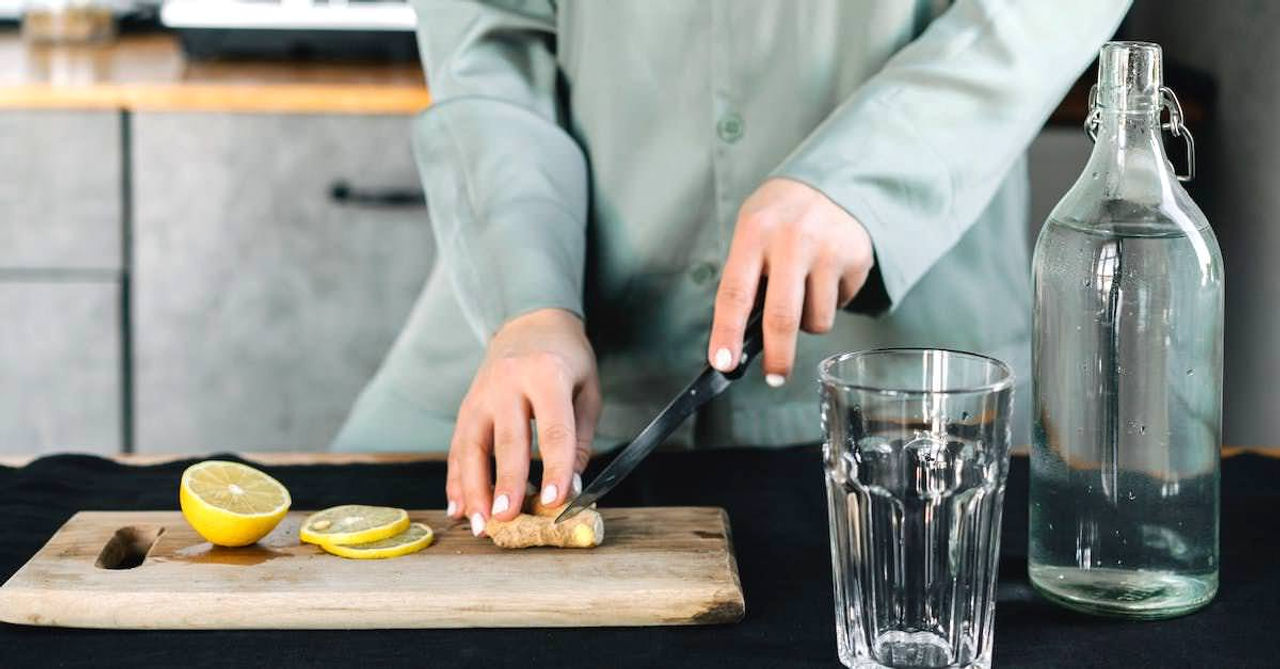Stress has become an unavoidable part of modern life, particularly for busy professionals who must juggle multiple responsibilities and deadlines. Constant pressure can have a negative impact on both mental and physical health, reducing productivity and leading to burnout. This article will go over the top ten simple stress management techniques that busy professionals can incorporate into their daily routine to maintain a healthy work-life balance and improve their overall well-being. These techniques are simple to implement, inexpensive, and adaptable to individual needs and preferences. We've got you covered on everything from mindfulness meditation to time management techniques.
Mindful Breathing Techniques For Stress Management

Mindful breathing, also known as deep breathing or diaphragmatic breathing, is a popular stress-reduction and relaxation technique. This technique entails taking deep breaths through the nose, holding them for a few seconds, and then slowly exhaling through the mouth.
You can calm your mind and reduce physical symptoms of stress such as rapid heartbeat, tense muscles, and shallow breathing by focusing on your breath. Mindful breathing can be practiced anywhere, at any time, and is especially beneficial during times of stress or anxiety.
Find a comfortable and quiet place to sit or lie down to practice mindful breathing. Close your eyes and take a deep, belly-expanding breath in through your nose. Hold your breath for a few seconds before slowly exhaling through your mouth, feeling your belly contract. Repeat this process several times, focusing on your breath sensation and letting go of any distracting thoughts.
Mindful breathing is one of many effective stress management techniques that busy professionals can use to improve their overall health and well-being. This technique, with a little practice and consistency, can help you achieve a more calm, centered, and productive state of mind.
Progressive Muscle Relaxation

Progressive Muscle Relaxation is a stress-reduction technique that can be extremely beneficial. Each muscle group in the body is tensed and then relaxed, allowing for both physical and mental relaxation. This technique can help reduce heart rate, stress hormones, and muscle tension.
Find a quiet and comfortable place to sit or lie down to practice Progressive Muscle Relaxation. Tense and hold the muscles for a few seconds before releasing and relaxing them, beginning with the feet. As you move up the body, tensing and relaxing each muscle group in turn until you reach the neck and shoulders. Repeat as needed to achieve complete relaxation and calm.
Progressive Muscle Relaxation is a simple and effective relaxation technique that can be practiced anywhere and at any time. It's an excellent tool for stressed-out professionals who want to improve their overall sense of well-being.
Exercise and Movement
Exercise and movement are two of the most effective stress management techniques. Endorphins, which are natural mood boosters that can reduce stress and anxiety, are released during physical activities such as jogging, cycling, swimming, or gym workouts. Exercise also helps to lower cortisol levels, which is the stress hormone. When you exercise, your muscles tense and then relax, and this tension-release cycle can leave you feeling calm and well-rested afterward.
Furthermore, exercise and movement are excellent ways to divert your attention away from stressors. You're less likely to ruminate or worry about work or personal issues when you're engaged in physical activities. Instead, you're more focused on your movements, breath, and bodily sensations. Exercise can also help you sleep better, which is important for stress management. When you get enough sleep, you become more resilient to stress and better prepared to face daily challenges.
Creative Outlets and Hobbies
Engaging in creative outlets and hobbies is one of the most effective stress management techniques for busy professionals. These activities can provide a welcome break from the daily grind and a sense of accomplishment away from work-related tasks.
Creative hobbies, such as painting or playing an instrument, have been shown to reduce stress and improve overall well-being. These activities allow people to express themselves in a non-work context, which can help to lower cortisol levels and reduce feelings of burnout.
Additionally, engaging in creative activities can improve cognitive function and problem-solving abilities. Taking a break from work-related tasks allows the brain to rest and reset, allowing people to approach tasks with a fresh perspective and renewed energy.
Examples of Creative Hobbies and Outlets:
- Painting, drawing, or sketching
- Photography
- Knitting or crocheting
- Cooking or baking
- Playing a musical instrument
- Dancing or taking a dance class
- Writing or journaling
Whatever the creative outlet, the key is to find something that brings you joy and allows you to spend time away from work-related tasks. Making time for these activities can help stressed-out professionals manage their stress and increase their overall happiness.
Time Management and Prioritization
Time management is an important skill that can help busy professionals achieve their goals while reducing stress. Prioritization is an essential component of time management because it allows people to devote their time and energy to the most important tasks.
The first step toward effective time management is to identify your objectives and the tasks that must be completed to achieve those objectives. Once the tasks have been identified, they should be prioritized based on their importance and urgency. The next step is to set aside a specific amount of time for each task and work hard to complete it within that time frame. This ensures that the tasks are completed efficiently and that no time or energy is wasted.
Avoiding procrastination is another important aspect of time management. Procrastination can cause undue stress and a last-minute rush to finish tasks before deadlines. Break down complex tasks into smaller tasks and assign a time limit to each task to avoid procrastination. This ensures that the tasks are completed gradually and not all at once.
To summarize, effective time management and prioritization are critical skills for busy professionals who want to reduce stress and achieve their goals efficiently. Professionals can effectively manage their time and increase their productivity levels by identifying goals, prioritizing tasks, allocating time, and avoiding procrastination.
Social Support and Connections:
Seeking social support and connecting with others is one of the most effective ways to manage stress. Strong relationships can help you feel less isolated and give you a sense of belonging in both your personal and professional life. According to research, social support can help reduce stress, improve overall mental health, and increase emotional well-being.
Joining a sports team or club, attending networking events, or simply inviting friends or family members to spend time with you are all ways to build social support and connections. It's also critical to cultivate positive relationships with coworkers and colleagues, as this can contribute to a more supportive and collaborative workplace. When you're stressed, don't be afraid to ask for help and support from those around you.
The Bottom Line:
Stress management can be difficult for busy professionals, but by incorporating these simple techniques into your daily routine, you can reduce stress and improve your overall well-being. Remember to prioritize self-care, take breaks as needed, and seek support from those around you as you work to manage stress. You'll be better able to handle the demands of your job and live a more balanced and fulfilling life as a result.
Nutrition and Hydration
Stress management can be aided by proper nutrition and hydration. Eating a well-balanced diet rich in colorful fruits and vegetables, whole grains, lean proteins, and healthy fats provides your body with the nutrients it requires to function properly. Avoiding processed and high-sugar foods can also aid in the stabilization of blood sugar levels, which can have an impact on stress levels. Stress and fatigue can also be caused by dehydration. Water consumption throughout the day can increase energy and improve cognitive function. Drinking at least eight glasses of water per day is recommended by experts. If plain water doesn't appeal to you, try infusing it with fresh fruits or herbs for flavor. Caffeine and alcohol should be consumed in moderation as excessive amounts can cause dehydration and have a negative impact on stress levels. Overall, proper nutrition and hydration are two simple yet effective ways to help with stress management and overall well-being.
Sleep Hygiene and Relaxation Techniques
Stress can have a negative impact on sleep quality, resulting in a vicious cycle of fatigue and anxiety. It is critical to practice good sleep hygiene in order to combat this. Creating a relaxing bedtime routine, avoiding caffeine and alcohol before bed, maintaining a consistent sleep schedule, and creating a comfortable sleep environment are all part of this. Limiting screen time before bedtime is also beneficial, as blue light can disrupt the body's natural sleep cycle.
Relaxation techniques, in addition to good sleep hygiene, can help with stress management. Deep breathing, meditation, and yoga can all help to reduce body tension and calm the mind. Progressive muscle relaxation, which involves contracting and relaxing different muscle groups, can also be an effective method of releasing physical tension. To promote relaxation and reduce stress levels, it is critical to find the technique that works best for you and incorporate it into your daily routine.











